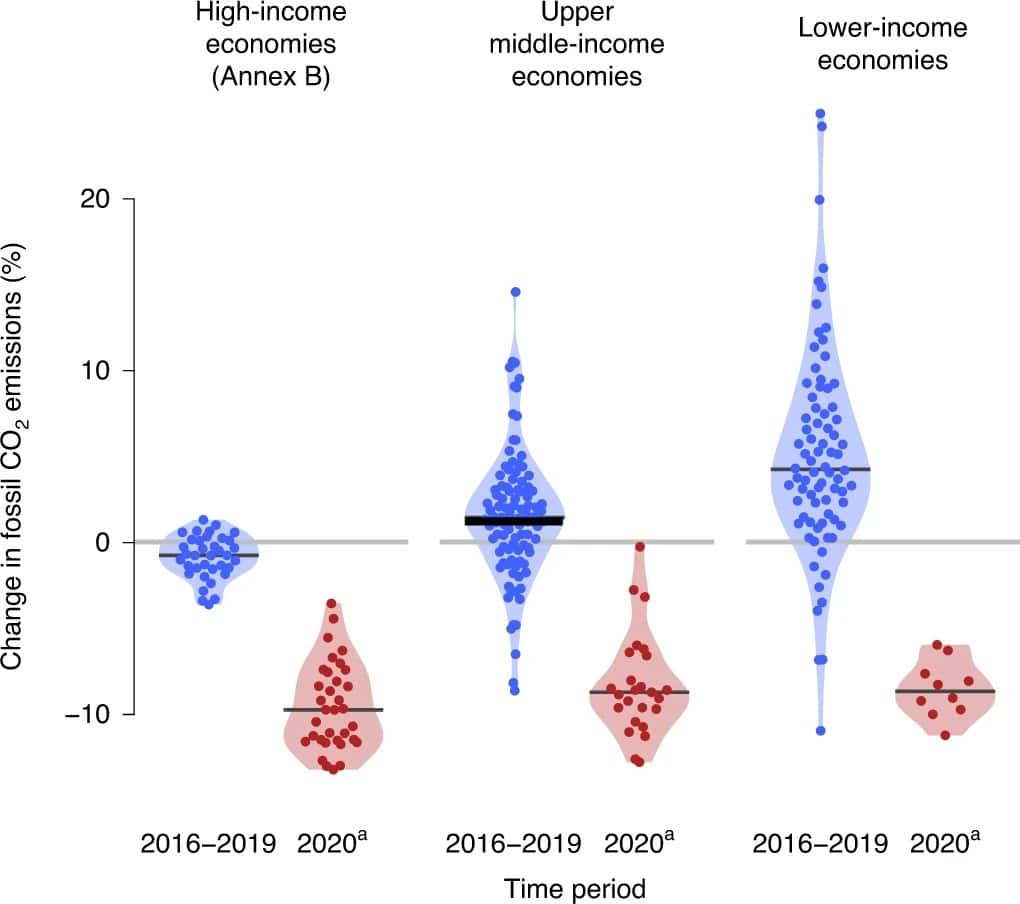A recent article published in Nature Climate Change assesses national fossil fuel emissions under two different scopes: since the Paris Agreement, and since the COVID-19 pandemic. They report the contradictory nature of investments in fossil-fuel infrastructure and strengthened climate targets. Which of these two paths is reinforced by policy choices will decide whether we achieve the Paris Agreement goal of staying below 2°C global warming.
Earth.Org takes a closer look.
—
Since the adoption of the Paris Agreement in 2015, climate action has been building momentum. From the corporate world, where ESG has become standard, to the investment shift from coal and unsustainable ventures, to net-zero targets and activists of all ages, the movement is pervasive. Unfortunately, actual climate action is nowhere near fast enough to avoid serious consequences from global warming.
This is to be expected. Our society rewards making economically profitable decisions, and the natural world is severely undervalued. The cost of damaging our environment will mainly make itself felt in our food yields and our health (think poor air and water quality and a changing disease landscape). The sad truth is that poorer countries will bear the brunt of the impact, and this may be why richer countries unconsciously (or otherwise) take more time than they should to adapt.
While we wait for governments to implement carbon taxes and other measures to correctly price our impact on the environment, nationally determined contributions, ratified under the Paris Agreement, reflect a growing awareness of the problem at hand. Between 2015 and 2019, high-income countries accounting for 35% of global emissions have, on average, slightly reduced their emissions. Other categories have all seen a net increase in average emissions.
However, all of this changed in 2020, where the gridlock resulted in 7-10% emission cuts for all groups.

Change in fossil CO2 emissions (percent per year) in the 5 years since the Paris Agreement. Source: Le Quéré, Corinne, et al. (2021)
Global fossil CO2 emissions decreased by around 2.6 Gigatons (GtCO2) in 2020 to 34 GtCO2 in total. This is 7% lower than 2019 levels, and though driven by the COVID-19 pandemic, such a drop in emissions has never been witnessed.
It is concerning then that we need 1 to 2 GtCO2 drops per year throughout the next decade to avoid exceeding 1.5°C and stay well below the 2°C mark.

Source: Le Quéré, Corinne, et al. (2021). Credit: AJ De Gol (https://twitter.com/ajdegol?lang=en).
As we recover from the pandemic, some (mostly European) countries have laid out exemplary rebound policies that encourage green infrastructure investment while discouraging fossil-fuel driven activity. Unfortunately, fossil fuels remain the dominant recipient of funds in most countries, including China and the US. Without true divestment, we risk making up for the 2020-21 slowdown in very little time, returning to the 2015-2019 mitigation rhythm of 0.16 GtCO2 per year.
The first most attractive short-term solution is reforming transport systems, highly disrupted during the pandemic. Active transport (safe walking and cycling) in cities, public transportation and electric vehicles could become a new global norm in higher-income countries, spear-heading a trend for developing nations. Second is the promotion of renewable energy. The implied air quality benefits combined with the progressive reform of our energy production are the logical choice.
It remains to be seen whether authorities will take this unprecedented opportunity to reform or simply let things fall back into place.
This article was written by Owen Mulhern. Cover photo by Elena Mozhvilo on Unsplash.
You might also like: Amazon Ablaze in 2020
References
-
Le Quéré, Corinne, et al. “Fossil CO2 emissions in the post-COVID-19 era.” Nature Climate Change 11.3 (2021): 197-199










![The Statistics of Biodiversity Loss [2020 WWF Report]](https://u4d2z7k9.rocketcdn.me/wp-content/uploads/2020/12/lprwinkyTHB-544x306.jpg)





